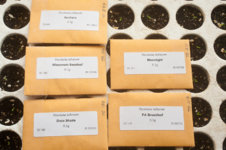I had noticed over the past 12 months that navigating to any GRIN Nicotiana-related contact information has become more obscure. I suspect that they're under the gun.
If we're talking about maintaining a substantial seed bank of 100-200+ varieties over an extended period of time (10 or more years), then we will need a formal plan, at least two storage sites, and a carefully maintained database of the resourses held, so that each variety can be scheduled for grown-out at least every two or three years. Standards for seed purity will need to be established, along with a set of basic seed-saving instructions.
Since we don't maintain an armed force to allow us to levy a tax on ordinary citizens, we will need to charge for at least the packaging and postage of distributing the seed. (Seed Savers Exchange (
http://www.seedsavers.org) is funded by seed sales to the public, and voluntary membership fees that entitle "members" to receive a special newsletter and a discount on seed from their seed bank.) That would mean that the free seed offer should be more limited. The mere existence of the FTT seed bank, in the face of our tax-funded GRIN's petulance, will attract interest.
All of the labor involved would be donated. Most of us do this as a labor of love for a threatened heritage.
Over the next few months, I will construct a SQL Server database and a Web application front-end, for which I can host the back-end. Access would be available to anyone, with security restrictions for editing or inserting any data. This database would feature some of the useful information that has been virtually lacking in the GRIN.
This might also be a good time to purchase additional heirloom seed varieties from commercial sources, and grow them out over the next few years, with a goal of maintaining as many heirloom varieties as possible.
Over the next few weeks, I'll put together a list of data fields that should be a part of the new database, then solicit input for additions or subtractions.
Bob




